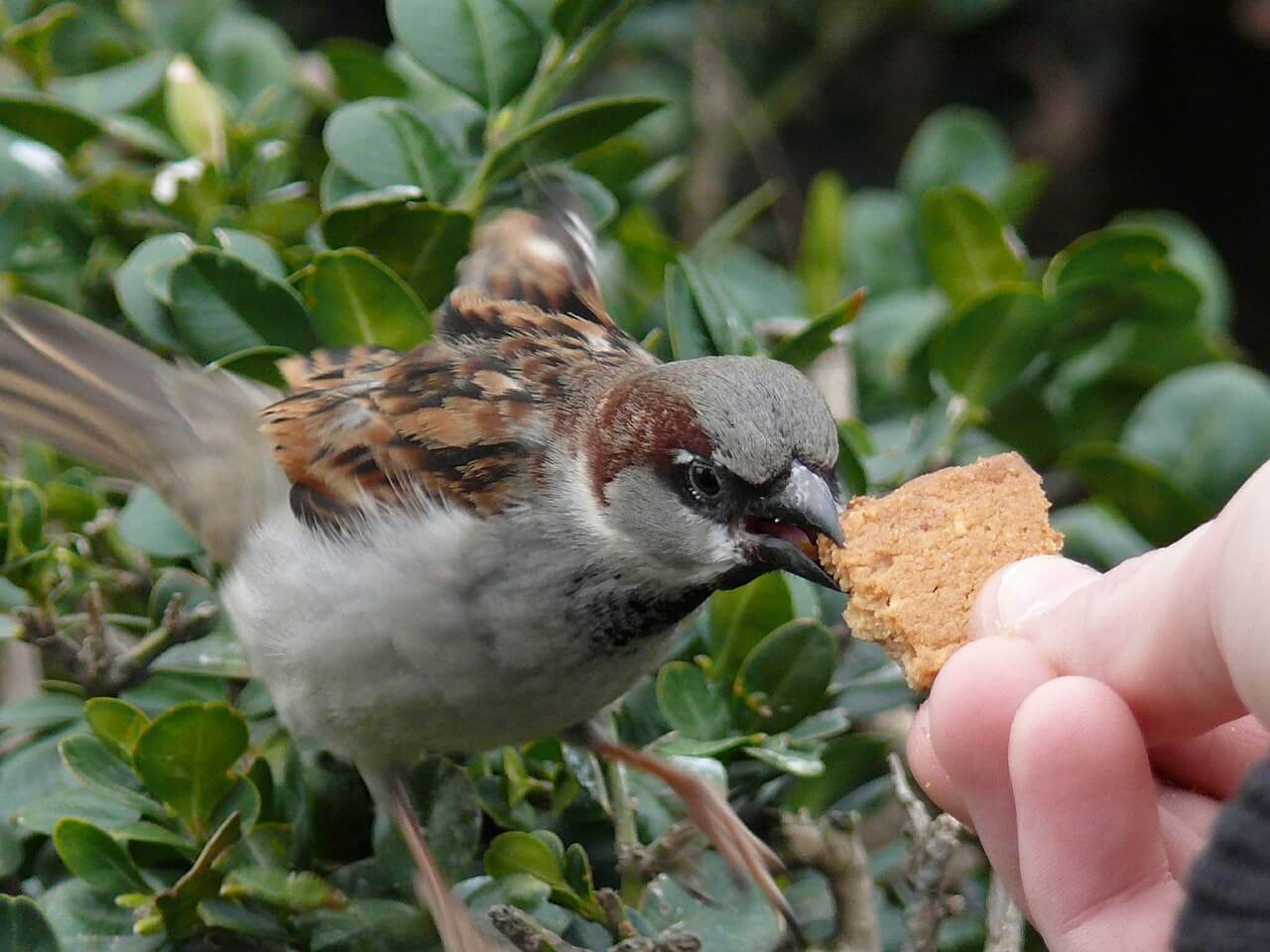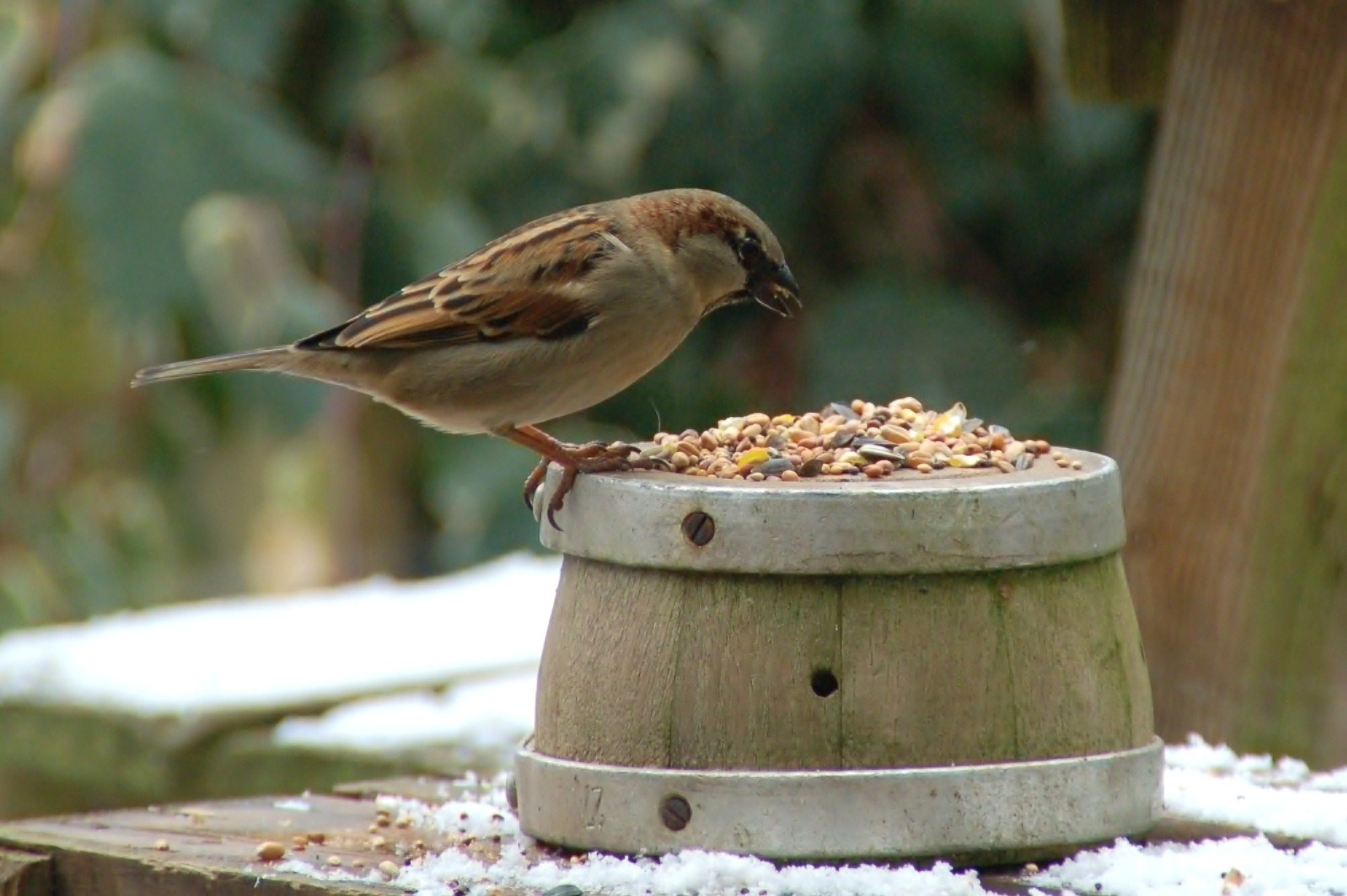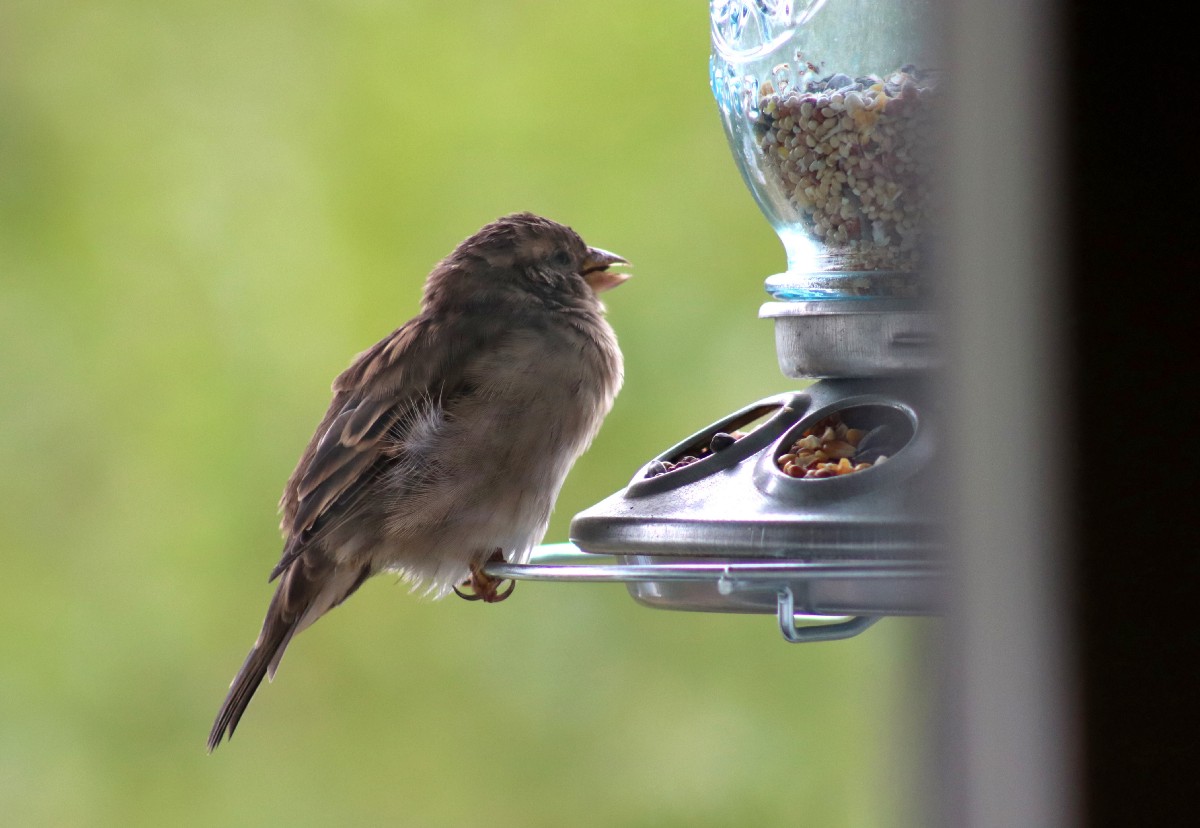
Small and often plain brown in colour, sparrows may not be the most attractive of birds, but they are among the most numerous. There are as many as 35 types of sparrow n the USA alone, with many others in Europe and other parts of the world, and these charming birds will be seen often at your feeders. So, what do sparrows eat?
Sparrows are omnivores that mainly eat a diet of seeds fruit. They will happily feed on berries and nuts, apples and tomatoes, and just about any fruit they can find. The sparrows diet is largely determined by the environment they are found in. Sparrows will eat insects and spiders, plus small lizards and frogs. If you want to attract sparrows to a feeder it’s worth knowing they are largely ground feeding birds, but they will happily feed from a table where the right food is available.
So, What Do Sparrows Eat?
Fruit – What Fruit does a Sparrow Eat?
A sparrow is a small bird – not the smallest by far, but most are larger – that needs to absorb its body weight in food every day, and more! These cute little feathered creatures are a joy to watch hopping along the ground, looking primarily for fallen fruit from bushes and shrubs. Here’s a list of the fruits that top the sparrows diet list:
- Grapes
- Apples
- Pears
- Plums
- Peaches
- Nectarines
- Tomatoes
That’s not a comprehensive list as the busy little bird will eat just about any fruit, and as we said it depends on what is around in its environment. These fruit are rich in vitamins and proteins that are essential to the bird’s development and bone density.
As the sparrow is an omnivore it will also need a healthy diet of live food and we’ll come to that later, but here are some of the vitamins present in the fruit listed that are essential to the sparrow for good health:
- Vitamin C
- Vitamin D
- Vitamins A, E and K.
Vitamin A in particular is a vital element of a sparrow diet as it is a growth vitamin, and deficiency in vitamin A is notably a problem in pet birds as well as those in the wild. In addition to the vitamins there are other elements in the fruit listed that help the sparrow achieve good health, including:
- Iron
- Zinc
- Selenium
- Potassium
- Copper
- Manganese
It should be said at this point that these are elements essential to all animals and birds, as well as to humans. Many of the above vitamins and elements are also found in vegetables which a sparrow may also enjoy if little else is available. Now let’s look at the insects that the sparrow likes to make a meal of.

Insects – Which Insects will a Sparrow Eat?
An interesting fact about sparrows is that they feed their young almost exclusively on insects. They choose their nesting site and also their reproduction season according to when the most insects are available.
While the adult birds perhaps eat more fruit than insects, these tiny creatures still make up an important part of the sparrow’s diet. Like many birds that eat insects the sparrow is not a choosy type. It will eat whatever is crawling around in the near vicinity. The list of insects eaten by the sparrow could be endless, but the following are most likely to be part of the diet in the Americas:
- Beetles
- Ants
- Grasshoppers and crickets
- Moths
- Flies
- Mealworms
- Caterpillars
The sparrow will happily feast on any of the above that are available in its environment. If you watch a sparrow on the floor searching for food note how it hops rather than walks, an interesting trait of the species, but also watch how the sparrow forages among the dirt for insects and grubs either for itself or for its young.
Nature has allowed all living creatures to develop with systems that require sustenance from vitamins and other elements. This is what the sparrow gets from its insect meal:
- Vitamin C
- Vitamin D
- B12 and B6
- Vitamins A, E and K.
Each of those – as mentioned above – is as essential to the bird as to any other living creature. For the minerals that the bird benefits from after eating insects refer to the list under the fruit section, and add magnesium, in which insects are rich.
The insect and fruit diet is the main part of the sparrows regime, but there are others, so let’s talk about those.
What Else Will a Sparrow Eat?
As we have mentioned a couple of times the sparrows diet is determined by where it lives. Watch outside a fast-food outlet and you’ll see sparrows taking scraps from people who often throw them to the birds. They may also dine on any wastage that can be found. This is not great for the bird but if it’s all that can be found, then they have little option. We’ll talk about what you should put out for sparrows, but here’s a list of some of the other food the bird will forage for in the wild:
- Berries and nuts of various kinds
- Peas, lettuce, beans and other vegetables
- Rice and other types of grain
- Grasses, buckwheat and ragweed
- Sunflower buds for the oil and other types of flower bud.
Clearly there is a lot of available food for the birds to find but getting the balance right might be difficult for sparrows, especially in urban areas. It should also be added that sparrows have been known to take small lizards and frogs where they are available, which may come as a surprise given their small size.
While sparrows will find food in the wild it is always helpful to provide our feathered friends with another source of food, especially in the colder months. Let’s look at what you can put out to encourage sparrows and help them find food.
What Should I Put Out for Sparrows?
Sparrows in the wild are largely a ground feeding species, but they will come to a bird table or hanging feeder if you put food out that they are attracted by. Here are some of the foods you should include if you want to watch these active and social birds at close quarters:
- Sunflower seeds
- Millet and corn
- Breadcrumbs
- Any commercially available bird seed mix.
- Fruit as mentioned in the first section.
Sparrows should also have a water source available, and if you can provide them with an area in which they can enjoy a ‘dust bath’ you will find it surprisingly amusing to watch them perform.
Before we provide a summary, here are a few of the most frequently asked questions about sparrows and their diet.

Frequently Asked Questions
Will Sparrows Take food from a Bird Table?
Despite this being a species that prefers to forage on the ground the sparrow is a common visitor to bird tables and feeders. They will appreciate food in the form of sunflower seeds, many types of grain, breadcrumbs, fruit and more. The commercial wild bird food that you can buy in a pet store will contain plenty of the items the sparrow likes, and they will sift through and ignore any they don’t like!
Are There Sparrows in My Locality?
Unless you live in Antarctica you will have a local species of sparrow, as that is the only continent on which there are none. In the USA there are 35 or more species that appear in different states and regions. The American Tree Sparrow, Chipping Sparrow, Fox Sparrow, Lincoln’s Sparrow and 11 other variants are found just about everywhere in North America and will happily attend your bird feeders.
If I See Young Sparrows Should I Feed Them?
No, it is a job for the parents. Fledglings are fed entirely on insects for their development and should not be fed the items on your bird table.
Summary
Despite an often-dull appearance the sparrow remains a garden favourite wherever it may be, and their social antics and busy approach make them a fun and enjoyable addition to any feeding area. Attract them to your bird table with sunflower seeds and other food mentioned in the article and keep these charming little birds fed as they need to be.